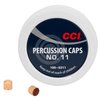Mizar
Member
1861, I put those links as a source for parts - my bad, I should have explained myself more clearly. I cannot guarantee you, that those vendors will sell you a cap & ball firearm. I was referring to UK and Germany, because some friends of mine had bought muzzle loading firearms from those countries in the past without problems. For instance, a friend of mine bought many original and replica black powder firearms from UK auction houses and they did not require any license, except an ID card copy - they told him that as in my country a license was not required, they can ship them without a problem. But I think, that when it comes to acquire a new muzzle loader (or cap & ball), sticking with French dealers is the best way to go - in general, they offer some of the lowest prices that I could find in all of the EU based web-sites.









